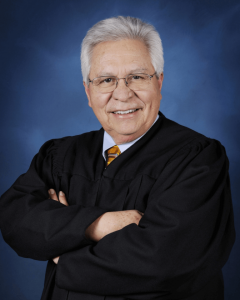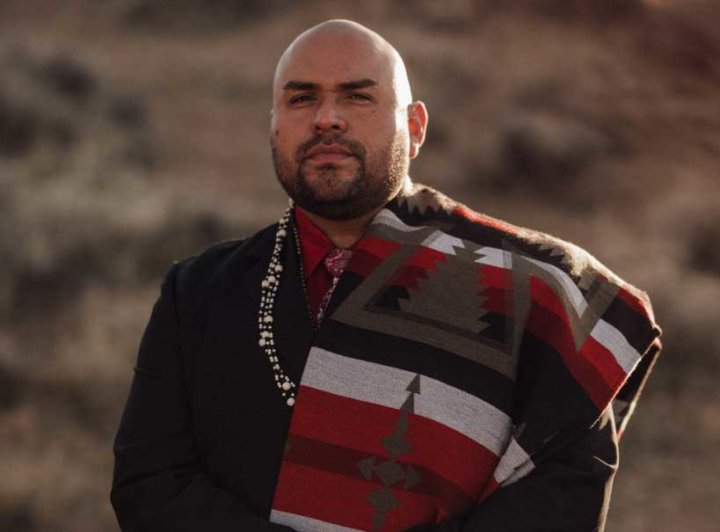by Suzette Brewer
Brian Melendez’s life was about to change forever. In the winter of 1987, a domestic dispute erupted in a house on the Reno-Sparks Indian Colony in Reno, Nevada. As law enforcement and social workers descended on the scene, an already bad situation turned into chaos.
“I didn’t understand what was happening. All I knew was that there was arguing and fighting and that my mother was all bloody and people were in handcuffs,” says Melendez.
“I remember a white lady came in and told me and my younger brother to pack a bag and that we were leaving. But we just stood there scared out of our minds, because we didn’t know what she meant or even what to pack. We had never packed a bag in our lives.”
Like most reservations where severe housing shortages are common, Melendez recalled approximately 16 people crowded into the single-family home. His home life was already a toxic stew of drugs, alcohol and simmering resentments when things took a violent turn that night in 1987, resulting in multiple arrests and the placement of at least five children into the Nevada state foster care system.
Melendez, who was seven at the time, and his five-year-old brother, Russell, were two of those children.
“At first they put us with our grandparents, but the social worker didn’t know what she was doing,” says Melendez, who is Northern-Southern Paiute and Western Shoshone. “So then they just put us with non-Indians, where ever they could find a house off the reservation.
“There was no vetting, no formal process, no certifications for these foster families―no nothing. But the social workers didn’t care; they just dumped us with whoever they could find to take us.”
Already in crisis, their lives were about to take another hairpin turn into a byzantine, disorganized foster care system, setting them both on the path toward eventual incarceration―and worse.
“Once they’ve got you, once you’re in the system, they’ve got you on a hook,” says Melendez. “And it’s almost impossible to get out.”
Into the Fire
Though they comprise less than one percent of the total number of children in the United States, American Indian/Alaska Native children are twice as likely to be investigated for abuse and four times more likely to be placed in foster care than their white peers, according to the Casey Center for the Study of Social Policy.
As a result, thousands of Native children are swept into state custody every year, where they are over-represented in foster care at nearly three times the rate of the general population, according to the National Council of Juvenile and Family Court Judges (NCJFCJ) in Reno, Nevada.
In South Dakota, for example, where Native children are only 13 percent of the total child population, they represent 48 percent of the children in the state’s foster care system. In Alaska, Native youth represent 18 percent of the total child population and nearly 46 percent of those in foster care in that state.

John J. Romero presides over the Children’s Court Division of the Second Judicial District Court in Albuquerque, N.M. – Photo courtesy NCJFCJ
And although the Indian Child Welfare Act (ICWA) was passed in 1978 to protect the removal of Native children from their families and communities in foster care and adoption proceedings, the vast majority of Native kids are placed in non-Native foster homes.
“It’s irrefutable that most states do a poor job complying with ICWA when placing these kids,” says Judge John Romero Jr., President of NCJFCJ. “Most courts are praying that the case before them isn’t an ICWA case because they just want to get it over with and move on, because Native kids require us to ask more questions and put more thought into their cases.”
Romero also says he believes that there is another, underlying reason that Native kids are more likely to be investigated and placed in foster care than other groups.
“From my perspective, there is an unconscious bias at work where there are presumptions about Native parents that result in these negative outcomes for their kids in state courts,” says Romero, who is also Presiding Judge of the Children’s Court Division of the Second Judicial District Court in Albuquerque, New Mexico.
“So I think it’s important to ask the questions that matter in an ICWA proceeding: Who is the father? Who is their tribe? Where is their family? Who is available to take them? It doesn’t cost a dime to ask these questions, but they can make a big difference in the long term outcomes for an Indian kid.”
For Brian Melendez, the child welfare system became a nightmare from which he and his family could never escape.
“Sometimes it had nothing to do with us or our parents. Sometimes they would find any reason to come get us and we’d get taken for small things and wind up back in the system with no school, no instruction, no nothing,” he says.
“It was never-ending with [the social workers]. We were fending for ourselves in a system where we fell through the cracks again and again.”
Subsequently, Melendez’s path from foster care to the juvenile detention system was strikingly short.
When Brian was nine, his father committed suicide at the age of 28. After that, he and his brother were placed into foster care again because his mother was unable to cope. Around the same time, he began getting into trouble with the law. All told, he landed in foster care a total of eight times, in addition to numerous stints in juvenile detention before aging out of the system.
“I started getting in trouble with criminal misdemeanors involving drugs and property crimes. But as I got older it started becoming more elevated and aggressive with violent offenses. I’d get in fights, and I was drinking and doing drugs,” he says.
“From 12 to 18, we’d get removed for months and months and no one would come for us, no one would advocate for us. It was like people forgot about us.”
A Path Forward
Brian Melendez eventually did age out of the child welfare system, went to rehab and slowly began turning his life around. Because educational instruction was not provided during his time in juvenile detention, at 17 he had virtually no credits toward his high diploma and was still a freshman. But not finishing high school, he says, was not an option.
Having previously been kicked out of four high schools, he enrolled at an alternative school that allowed self-directed, independent instruction, which he preferred to traditional education. Now almost an adult, he was highly motivated to stay out of the system at any cost.
So with the help of a local attorney who moonlighted as a high school teacher, he went for it.
By the age of 18, he had crammed almost four years of high school into a year and a half, and graduated with a high school diploma.
“I worked and worked, and read and read, and wrote and wrote,” says Melendez. “I’ve never worked so hard for anything in my entire life. I finished those packets as fast as I could. But I was determined.”
After a short stint working at a factory warehouse loading boxes in 110-degree heat with a co-worker who had been to prison, Melendez made up his mind to move on to higher education.
“One day I looked at [my co-worker], who couldn’t get a job anywhere else because of his prison record, and thought, ‘This is a dead end. This cannot be my life,’” he says. “So I quit that day and never went back.”
Melendez tried community college, but found himself woefully underprepared. “I didn’t have the skill set or know-how to study,” he says.
But he tried again, and graduated from culinary school in Las Vegas, Nevada. After two years in the restaurant industry, he decided to continue pursuing his education and double majored in criminal justice and political science at the University of Nevada-Reno.
Eventually, he obtained his master’s degree in Justice Management and went on to become a probation officer working with Native youth in the juvenile justice system.
“I was the first person to go to university in my entire family,” says Melendez. “I did it because I wanted to work within the system, because I understand it in a way that a lot of other people don’t. I know what these kids are in for and I wanted to help them because we never got any help.”
As a probation officer, Melendez worked on culturally relevant prevention programs for Native families and youth in Reno. “Just having someone with knowledge of the community and how to work with them was huge,” says Melendez.
Melendez subsequently went to work for the Bureau of Indian Affairs, which he left in 2018 to return to the reservation where he began a consulting business working with tribes and to run sweat lodges and meditation groups for those out of incarceration, veterans, addicts, and “whoever needs it,” he says.
He also created and produces the Coffee With an Indian podcast to discuss Native issues.
“My whole life has taken a giant circle. No one wakes up and says, ‘I’m gonna be a criminal today,’” says Melendez, who is now 39. “But a lot of Indian people go into the system; they break down and give up. So I knew when I got older that I wanted to be of service and to help my people because what we do grows exponentially―for good or bad.
“So if you create something positive, then it will continue to grow.”
Suzette Brewer, a 2018 John Jay/Tow Justice Reporting fellow, is a veteran journalist who specializes in writing about federal Indian law, including the Indian Child Welfare Act, environmental issues on Indian reservations, the opioid crisis, and violence against Native women and children. A member of the Cherokee Nation from Stilwell, Oklahoma, she received the Richard LaCourse-Gannett Foundation Al Neuharth Investigative Journalism Award in 2015 for her work on the Indian Child Welfare Act.
This article was written as part of her John Jay/Tow Fellowship project. It first appeared in The Crime Report.
Photo courtesy Brian Melendez


Now this was an excellent article.